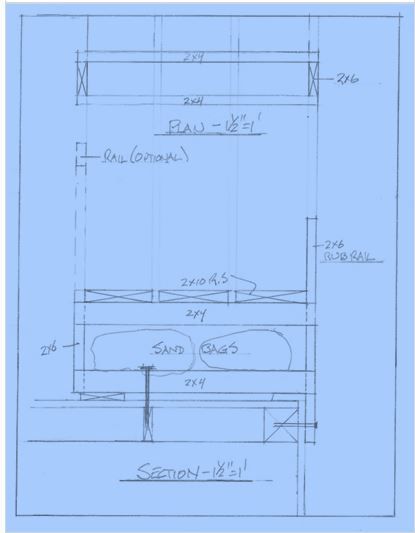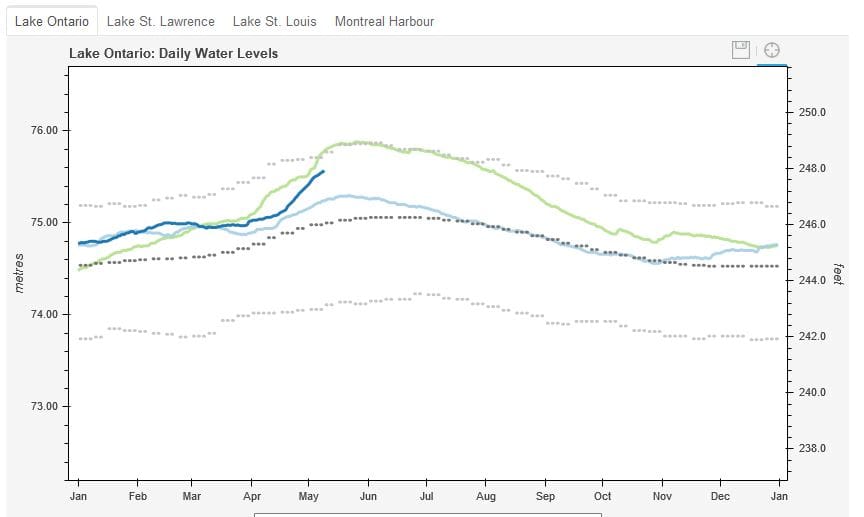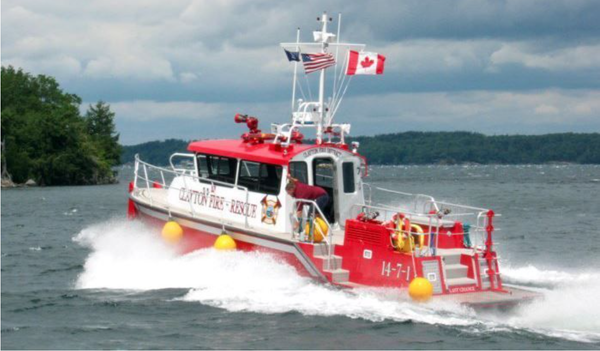High Water Updates
by: Melissa Barton, Richard Withington & Susan Smith
Editor's Note: Melissa Barton sent dozens of emails about High Water Updates, to her neighbors around Murray Isle, last week. They, in turn, share with other islanders and quickly the word is spreading. Richard Withington, Round Island, immediately added additional warnings about ESD (Electric Shock Drowning). High water can bring many risks, but communication and knowledge may help.
Thousand Islands Association (TIA) is sharing information too. TIA spokesperson, Stephanie Scott reminds us that high water means "Heartbreaking property damage" plus: inaccessible docks, new water hazards that now lurk below the water’s surface and "bottom line hits" for River businesses. They have produced 500 NO WAKE signs (at no cost for members or non-members) for distribution, starting on the weekend of May 18th. The signs can be found at: Ed Huck Marina, in Rockport; Peck's Marina, in Lansdowne; 1,000 Islands Boat Museum, in Gananoque and Save the River offices, in Clayton.
More detail will be available on TIA’s Facebook Page.
Together we wish all Thousand Islanders a safe spring as they return to the River.
The River is high this spring; the burning question on everyone's mind is how high will it go? There are many opinions circulating on this issue. Some feel the water level will be higher than 2017, some feel that it will not. Unfortunately, no one knows the answer for sure. To make matters even more complicated, predictions change almost weekly and so newspaper articles, Facebook posts or email chains, containing predictions, may be obsolete by the time you read them. If you would like to stay up to date on the water levels and predictions, below are some sources that contain that information. Remember, it is best to check these sites often, to get the most up-to-date information:
The ILOSRB has a Facebook page where they share updates and information. Lately, this information has been updated twice a week. It can be found here:
International Lake Ontario - St. Lawrence River Board. Note: if you FOLLOW this page, you will receive updates on our FB newsfeed.

The International Lake Ontario St. Lawrence River Board (ILOSRB, the ones who regulate outflows through the power dam) publishes current condition charts, a forecast chart, and outflow change information. https://ijc.org/en/loslrb/watershed/current-conditions

US Army Corps of Engineers publishes daily water levels (with Friday/Saturday/Sunday levels updated on Mondays). Scroll down to "Daily Lakewide Average Water Levels" and you will see 2 tan boxes stating "Great Lakes Water Level Report" (one is feet and the other is meters, click on "Current Month" in the tan box of your measurement choice, for the daily lake average.
Be sure to review other areas on the website for information that will interest you. The St. Lawrence River monthly update can be found here: https://www.lrb.usace.army.mil/Missions/Departments/Water-Management/St-Lawrence-River-Bulletin/

An App - Rivercast
Rivercast is an App for your iPhone and iPad. You can tap on photo of the two sensor River gauges, one at Cape Vincent and the other at Alexandria Bay and you will see the latest observed levels.

And...Be Prepared
The best anyone can do is be prepared. If you normally have to put barrels on your dock for high water, you should probably put them out soon, if you haven't already (remember to mark them with an "X" (and your island name/number, so if they float away, the Coast Guard doesn't have to investigate a suspicious barrel). You might build dock helpers or catwalks to keep boats from riding-upon docks. Steve Taylor provided a "how to build catwalks that can be spaced 6-feet apart if decked with rough-sawn 2x10 planks." Remember construction is best completed before these docks are required.


Remember:
1. Remove items from boathouse floors or items sitting on docks (chairs, dock boxes etc.)
2. Remove wood/branches and other debris from shorelines, so that when/if the water comes up, they won't become hazards in the River.
3. If you see debris floating in the River, try and remove it so it doesn't cause damage/accidents to others.
4. Check on your neighbors' property - especially if they aren't up yet!
Warning about ESD (Electric shock Drowning).
Articles in Lakeland Boating Magazine emphasizes the dangers of stray electricity, in water around docks, boathouses, and marinas.
A bad ground, faulty wiring, failing sacrificial anodes, and generators on boats, can all be sources of stray electricity in the water. A person or pet entering the water can be electrocuted and drown. Efforts to save the victim may lead to additional victims, unless someone thinks to shut-off the power or open a breaker. The risks are particularly high with the high water, as people use power tools and extension cords to put tops on docks, or to activate water pumps in the boathouse or shore well. Please, if you see a pet or person having trouble in the water, be sure to make certain the power is off, before extending an aluminum boat hook or jumping in to assist.
No swimming in a marina area, where other boats may be generating electricity. There are probes on the market that can be put in the water or swimming pool, to check for stray electric current; an alarm is activated if current is detected. Manufacturers and distributors are found online. We don't want any tragic accidents...
And WWNY News Reports

And WWNY-TV, published their story on May 10, 2019, stating; "Lake Ontario is roughly 2 feet above average for this time of year and sits roughly 8 inches below the records set in 2017."
Stay safe.
Compiled for TI Life by Melissa Barton, Richard Withington and Susan Smith.






Please click here if you are unable to post your comment.